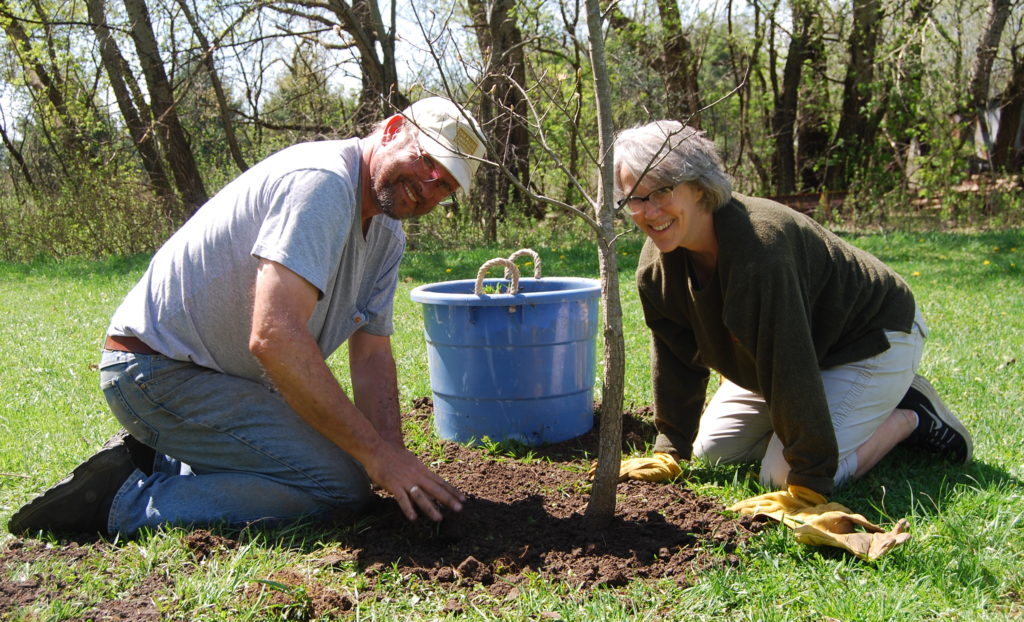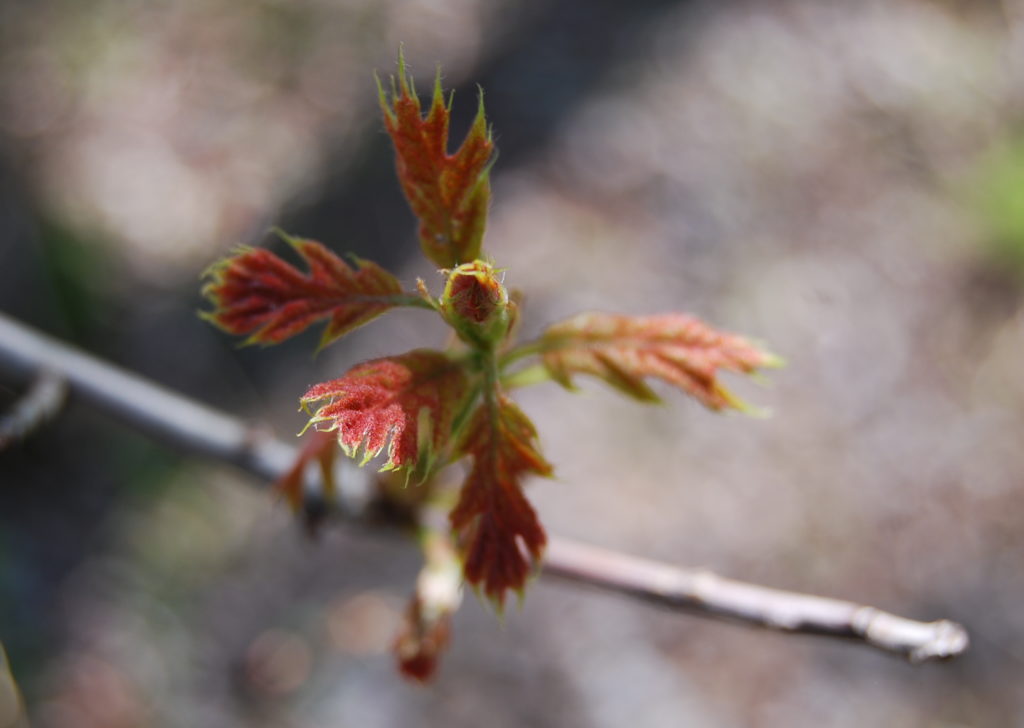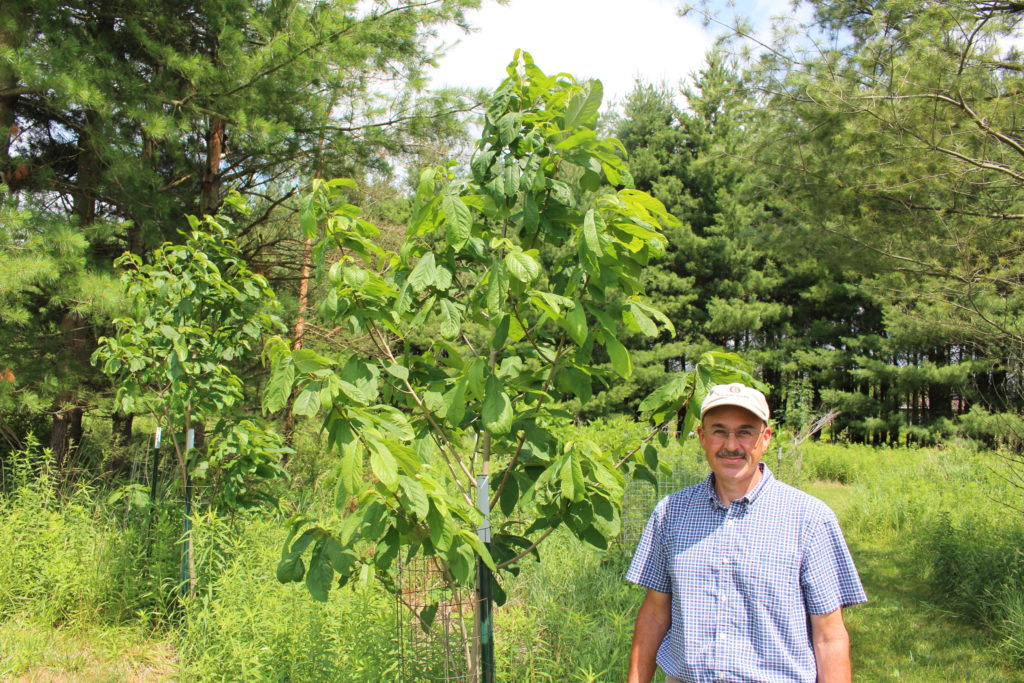
A site prepared for a natural burial at the Foxfield Preserve in Wilmot, Ohio. (Photo courtesy of Foxfield Preserve)
Interest is growing in natural burials. That’s good news for people interested in living (and dying) in the ways of a whole Christian faith.
I experienced this firsthand when I attended a session entitled “Dying for Conservation” recently at the Land Trust Alliance’s annual conference in Pittsburgh. The session featured representatives from a number of organizations that are operating conservation-oriented natural burial cemeteries in several eastern states.
One of the speakers was Jeff Corney, executive director of The Wilderness Center in Ohio. He spoke about his motivations to more widely promote the organization’s natural burial ground (Foxfield Preserve) and its conservation benefits. When his father died, their family had proceeded with a conventional burial. By the end of the whole experience, he was convinced the whole process was wrong. It was all wrong because it was not in keeping at all with his father’s life or their family’s values. His heart sank.
Foxfield Preserve is one of a growing number of conservation burial cemeteries around the country. In these places people are buried naturally as part of a larger effort to restore and manage natural habitats in those places. A portion of the fees paid for the burial often funds those restoration and management activities. In this way a person’s death contributes to the life of God’s earth.
This is an encouraging trend. Christians should embrace this with enthusiasm and support. In fact, as I wrote in this earlier blog, whole faith churches should make this the new normal.
Because it’s so much a part of our culture, we often overlook a defining moment of disconnection in the usual burial ritual we attend. At the graveside service a pastor will often use the phrase “dust to dust” in reference to Ecclesiastes 3:20. Yet, everything in the way the body has been treated and the way in which it will be buried is intended to prevent our dust from returning to the dust.
There are at least two reasons why this profound dissonance between the worldview of the Bible and how we actually bury our dead matters.
First, if you believe the earth is God’s, then damaging and diminishing God’s earth is something you will want to avoid at all costs, This should especially be true when it comes to a spiritual-cultural moment of profound meaning.
Yet, we allow the river of culture and tradition to carry us away from our actual values.
Here’s a concise rundown of the cost to God’s Creation that comes from an article in Forbes by Laura Moss in 2011:
Embalming bodies requires cancer-causing chemicals like formaldehyde, glutaraldehyde and phenol — in fact, every year in the U.S. we bury 827,060 gallons of embalming fluid. Plus, caskets are often made from mined metals, toxic plastic or endangered wood. U.S. cemeteries use 30 million board feet of hardwoods, 180,544,000 pounds of steel and 5,400,000 pounds of copper and bronze annually. Casket burials also prevent a corpse from decomposing efficiently, and this slow rotting process favors sulfur-loving bacteria, which can harm nearby water sources.
Obviously, the exact numbers have likely shifted, but the general consequences remain the same.
All of that chemical and industrial activity is designed to prevent the vessel that is our body from naturally being recycled back into God’s earth. Yet, we are compostable!
This is not even to mention the fact that the conventional cemetery itself is a largely sterile and dead landscape. Vast areas of lawn are doused with weed-killing chemicals and mowed regularly by lawnmowers with internal combustion engines.
If your loved one loved God and cherished God’s Creation, you’d have to conclude that the whole process fundamentally contradicts your loved one’s values.
And there’s another reason why our burial rituals matter.
My son and I are reading the Bible together in lieu of confirmation classes. We just finished up Numbers. One of the things we came to better appreciate, especially with the help of the writings of Rabbi Jonathan Sacks, was the way God integrated extensive rituals and laws into the everyday life of the people of Israel.
In his essay “Neuroscience and Ritual,” Rabbi Sacks notes that:
…much of our behavior is driven by instincts that lie beneath conscious awareness and the rational, reflective part of the brain, the prefrontal cortex. The question then arises: How, if our instincts are largely unconscious, can we change them? The short answer is ritual: Ritual is behavior that bypasses the prefrontal cortex. It is action based not on a ritual decision that this is how we should act. Rather, it is behavior that follows a precise set of rules, a fixed choreography. Doing certain acts repeatedly, we form new “habits of the heart” that work at an unconscious level to form new patterns of instinctual behavior.
In other words, rituals shape the hearts of the people carrying them out. And from those shaped hearts come habits of behavior.
As Jesus said in Luke 6:45: “Good people bring good things out of the good stored up in their heart, and evil people bring evil things out of the evil stored up in their heart…”
Unfortunately, our death and burial rituals form wrong habits of the heart as they relate to Creation. Our unconscious comes to understand that death and mortality are things to be afraid of and to deny. At a heart level we understand that we are separate from the life of God’s earth. We absorb the understanding that our eternal destinies and Creation’s eternal destiny are completely different. We deny a Biblical and scientific truth – we are made of dust.
Above all, our burials and our burial places assert a selfish dominion that is the oppostie of what we see in God. They reflect in their tangible details an odd hybrid of Greek philosophy and American industrial culture.
When our core rituals reflect ways in opposition to God’s ways is it any wonder that the rest of our lives do as well?
In that context, the trend towards narual burials and especially those that contribute to conservation of God’s earth is doubly positive. The trend offers hope for particular patches of land and water where people are buried. We can renew the life of what we have been charged to tend and mend.
What’s more, choosing to bury naturally offers hope for renewing the ground that shapes everything else – the landscape of our hearts and souls.
I plan to post some links to related articles on my Twitter feed. I hope you’ll follow it.














